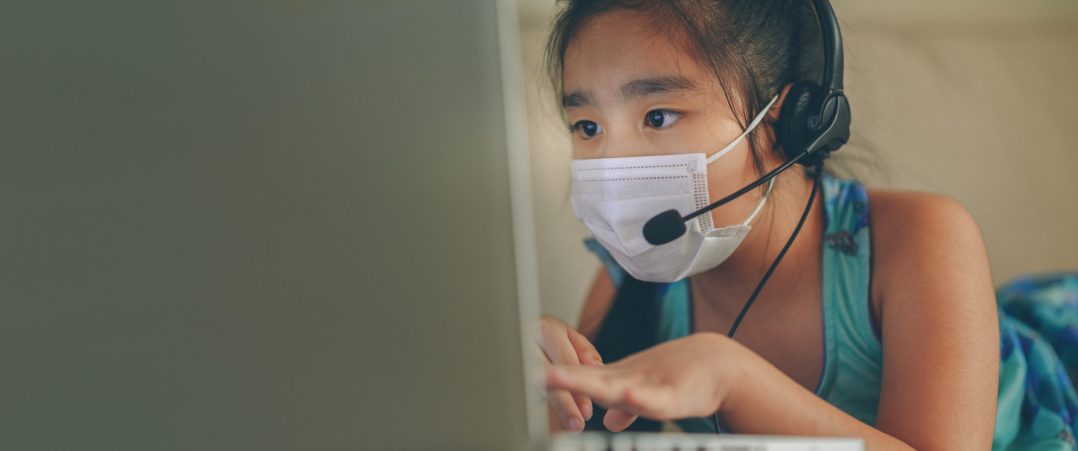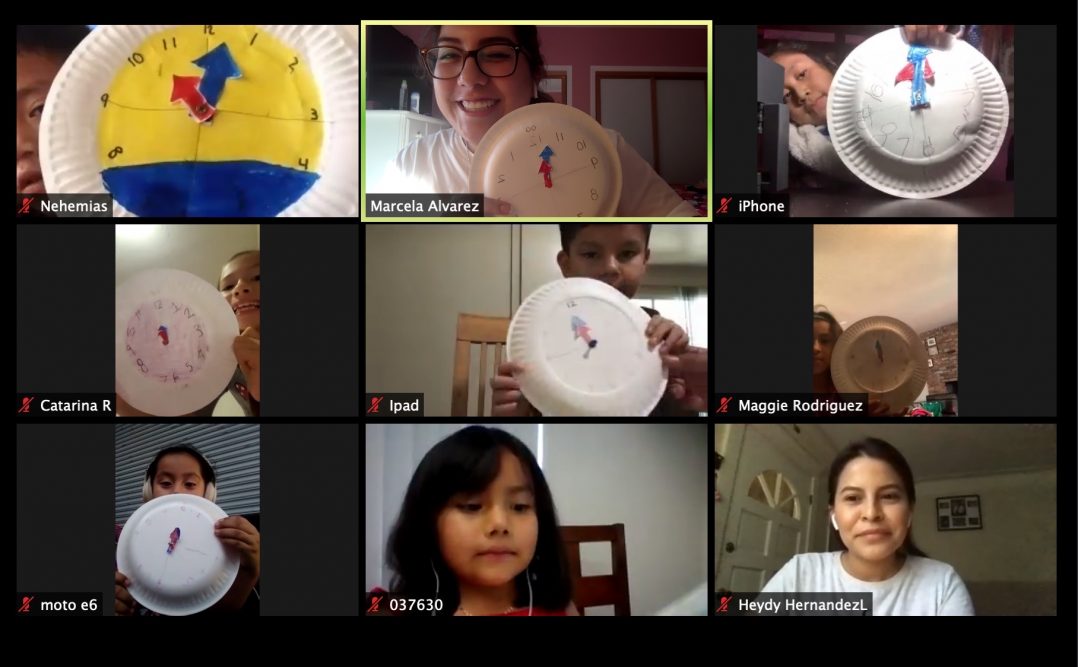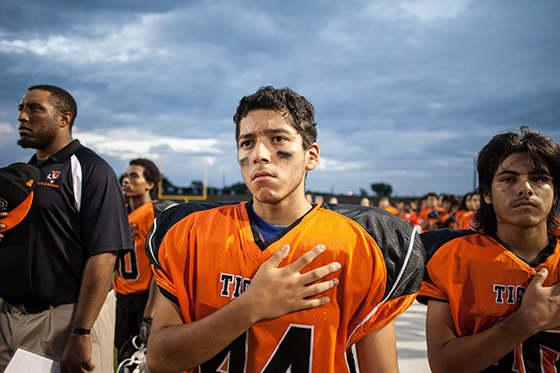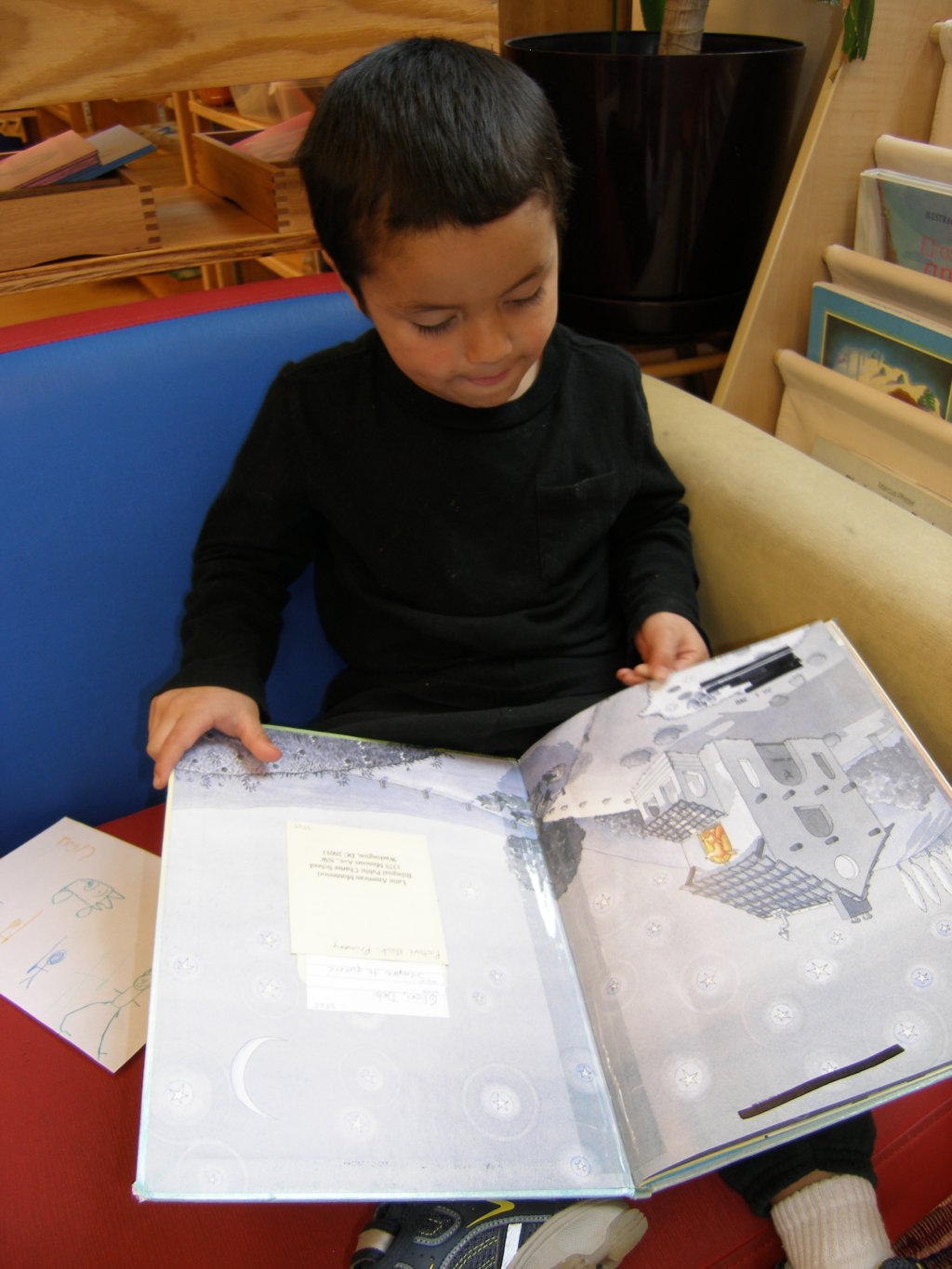Spotlight on California:
Navigating Back to School in a Coronavirus Hot Spot

Send your kids to school and risk exposing them, their classmates, their teachers, and your own family to the coronavirus. Keep them home and spend half your time (and theirs) trying to figure out how to get them online and then keep them there.
As YWCA President Alejandra Y. Castillo mentioned during a session on technology at this month’s 2020 UnidosUS Annual Conference, data from Pew Research Center had recently shown increasing numbers of Latino students gaining access to the Internet but COVID-19 showed just how many more students still lacked a computer, a tablet, or a steady high speed Internet connection, and it “turned the digital divide into the digital abyss.”
These are the unfortunate choices so many families in the UnidosUS Familia are currently facing and there’s no easy solution. However, UnidosUS education program and policy teams have been working to understand the educational outlook across the country and crowdsource best practices for navigating this unchartered territory.
ProgressReport.co is spending the month of August tracking the situation in its key states of Florida, California, Arizona, and Texas, all of which are coronavirus hotspots.
– The Author of this California blog is freelance journalist and editor Harold Maass, a regular ProgressReport.co contributor.
SCHOOL REOPENINGS IN CALIFORNIA
As COVID-19 cases spiked across the South and West over the summer, California surpassed New York to become the state with the most coronavirus cases. In July, Governor Gavin Newsom responded to the surge by ordering all schools in counties with rising infections and hospitalizations to prepare to hold all classes online when schools reopen for the fall term.
Most students live in districts where infection rates are too high, so the majority of California’s 6.2 million K-12 students, 54% of whom are Latinx and 19% English learners (ELs), are expected to start the year remotely. Educators say few schools are likely to get waivers to bring students back to campus when classes resume later this month. The state’s two largest districts, Los Angeles and San Diego, are among the school systems opening without in-person instruction. L.A. has about 735,000 students, and San Diego has 135,000.
State Superintendent of Public Instruction Tony Thurmond said he understands the importance of bringing students back to campus, but that it can only happen when schools can guarantee the health and safety of their students, teachers, and staff. Still, the data compiled since schools closed in the spring show that the safety that policy provides comes at a price.
“Many of our students who are Latino, who are ELs, have struggled by not having access to teachers who can help with the homework assignments. Not having computers puts many of our students at a disadvantage,” Thurmond said this summer in a UnidosUS virtual town hall on Latino education during a time of coronavirus. “We were already working to address an achievement gap that disproportionately impacted Latinos and Blacks and students from low-income backgrounds. These gaps have been exacerbated by the coronavirus.”
San Rafael’s Canal neighborhood, a largely low-income and heavily Latino enclave in affluent Marin County, is one of the California communities where the digital divide is a huge obstacle to distance learning. The Canal Alliance, an UnidosUS Affiliate that champions immigrants and social justice, found in a survey that 57% of respondents in the Canal neighborhood lacked a computer, compared to just 10% outside the Canal. Forty-two percent of Canal residents had internet connections too slow to watch video without extended buffering or load a website in 10 seconds. Eighty-seven percent of residents outside the Canal said their connections were fast enough to do both of those things. This disparity can put Canal students at a severe disadvantage in online classes.
Luis Martinez, a 20-year Canal resident, told the Marin Independent Journal that his family is among those struggling with slow and unreliable internet connections, and it was a problem for his three children when their kindergarten, middle school, and high school classes switched to distance learning when the coronavirus pandemic hit in the spring.
“It’s a headache when the internet fails and slows down,” Martinez said. “It’ll log the kids out of their Zoom class and they miss out key points of the lecture. They miss out on learning.”
To address this issue, the Canal Alliance is partnering with the city, the county, and the school district to launch a mesh WiFi network in the Canal that will serve an estimated 2,000 students with hot spots around the neighborhood. The digital divide this will help address existed before the pandemic, but the problem took on new urgency in the pandemic as learning—and just about everything else—shifted online.
“It won’t cover the entire neighborhood, but it’s a critical first step,” said Air Gallegos, Canal Alliance’s education and career director.
But getting students the tools they need to learn online is not the only challenge facing families served by Canal Alliance. For example, real estate is expensive in the mostly affluent city, so many immigrants in the Canal live in crowded homes ill-suited as makeshift classrooms.
Roxana Cruz, a Canal parent of a University Prep Middle School student, said she had a list of worries about the coming term of distance learning, including whether her daughter will find her work space at home to be quiet and comfortable enough to get her schoolwork done, and that social isolation could affect her social and emotional well-being.
“I am also concerned that the material my daughter will learn online will not be enough for her to actually learn,” Cruz said. “I have a day job and I am concerned that my daughter will not get the food that she normally gets daily at school, and then will suffer academically due to lack of concentration.”
Pandemic-driven issues like unemployment, food insecurity, and disproportionately high COVID-19 infection rates among the Black and Latinx populations only expand huge equity barriers that these communities already faced, said Air Gallegos of Canal Alliance.
“For the immigrant community we serve, people were already in survival mode before COVID,” Gallegos said. “Our community is extremely resilient, but when you add a pandemic to that it’s getting harder and harder.”
Educators made rapid adjustments in the spring to address the lack of adequate technology and internet access, and help students cope with the challenge of studying in houses crowded with stressed-out families. Schools have applied the lessons of the early days of the crisis to their plans for the new school year.

At Para Los Niños, a UnidosUS Affiliate that runs charter schools and community centers serving 6,000 at-risk children and families in Los Angeles, preparations for reopening with all-remote learning include distributing headsets to help students focus without distractions, and 180 new tablets and personal hot spots—in addition to the more than 300 tablets and Chromebooks already sent home with students. Para Los Niños also is expanding online-education training for teachers, and continuing to provide free meals for pickup at schools, as well as diapers, toys, and other school supplies families need.
There are still plenty of challenges to address, because with each obstacle cleared another appears ahead, said Marcela Alvarez, a fellow with the UnidosUS National Institute of Latino School Leaders and a first-grade teacher at Para Los Niños-Gratts Primary Center in Los Angeles.
For example, what about the language barrier for immigrant families that speak Mayan dialects and aren’t fluent in Spanish or English? Or teens in dual-status families who have had to drop out and get jobs to replace income lost when their undocumented parents, ineligible for unemployment benefits, got laid off due to the pandemic? The potential problems go on and on.
“The issue of transportation and the ability to get to places where food and essential items are being distributed is a challenge for many. Parents are afraid to take public transportation with their children, so many face this barrier,” said Sam Joo, Para Los Niños vice president of Student and Community Services and co-leader of the organization’s COVID-19 Task Force. “The digital divide is very real for our families and is an area along with housing insecurity and childcare that needs immediate attention.”
For now, educators have to focus on the things they can fix. Getting children back on a fixed schedule after the rapid-fire adjustments of spring will help, as will focusing on building relationships with students and their families to foster open communication so crucial in this crisis, she added. “All we can do is be safe and work with what we have,” said Alvarez, who wrote about her experiences in UnidosUS’ education blog, ProgressReport.co, last week.
And now, more than ever, educators, who face the same stresses and isolation as everybody else, need as much support from their communities as their students need from them.
“We’re asking people to go the moon right now,” she said. “Reach out to your teacher friends. Because they are going to the moon, and they are taking your kids with them.”



